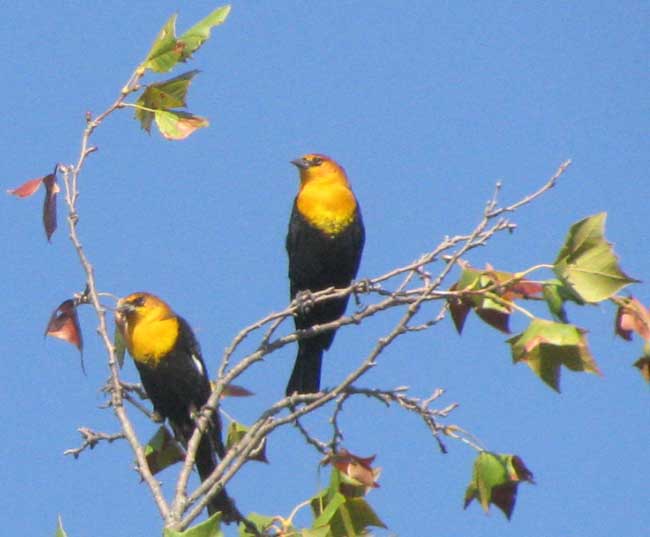Excerpts from Jim Conrad's
Naturalist Newsletter

from the the September 23, 2012 Newsletter issued from the valley of the Dry Frio River in northern Uvalde County, southwestern Texas, on the southern border of the Edwards Plateau; elevation ~1750m (~5750 ft); N29.62°, W99.86°; USA
YELLOW-HEADED BLACKBIRDS
About an hour after sunrise, as I was scalping sod from the backyard lawn to make room for gardening, a little flock of maybe a dozen heavyset birds settled in the top of the frontyard Sycamore. All the birds' golden chests faced directly into the low morning sun, and beneath the blue sky that was a pretty thing to see, as is clear above.
Only one North American bird species possesses a yellow head and a black body, and here it was: The Yellow-headed Blackbird, XANTHOCEPHALUS XANTHOCEPHALUS.
Unlike most birds who land atop the big Sycamore to bask in the morning sunlight these birds did not move about finding the most perfect spot, or preen. Silently and unmoving they looked all around, at the hills and the pastures, and at me. It was clear that they were visitors uncertain about where they were. They stayed about five minutes, then one of them gave a low chip and instantly they all rose and flew in a tight formation to some new spot where maybe they'd feel more at ease. When they flew, surprising white patches flashed in their black wings.
I'm sure that these birds were newcomers because Yellow-headed Blackbirds don't nest in this part of the world. Here in southwestern Texas we're right on the boundary of where they're seen only during their spring and fall migrations, and where they overwinter. They spend their winters mostly in northern and central Mexico, but also southwestern Arizona, southern New Mexico and extreme western Texas. They nest throughout most of the western US and southwestern Canada.
Will we have Yellow-headed Blackbirds here this winter? I hope so, for seeing them atop the old Sycamore, their golden chests and the blue sky behind them, is something delicious.